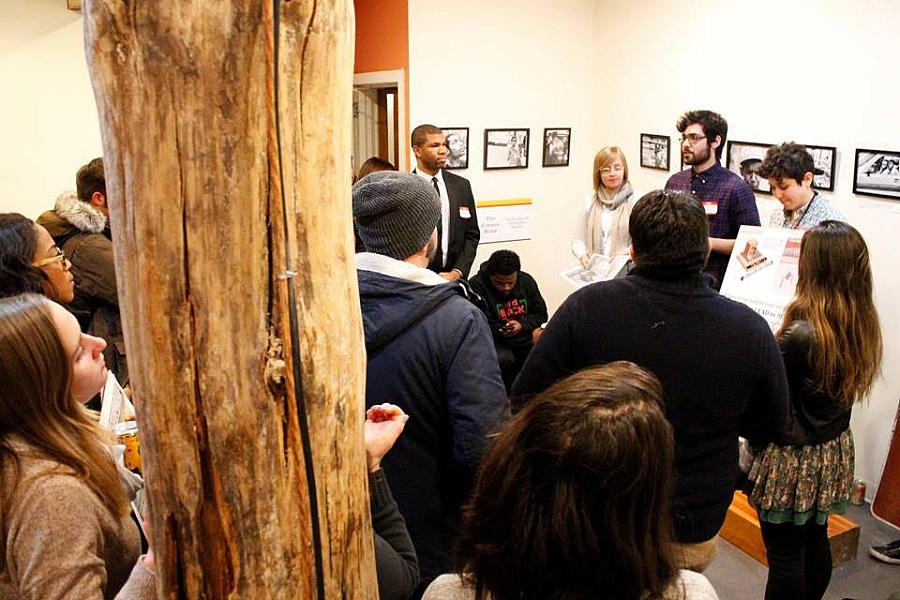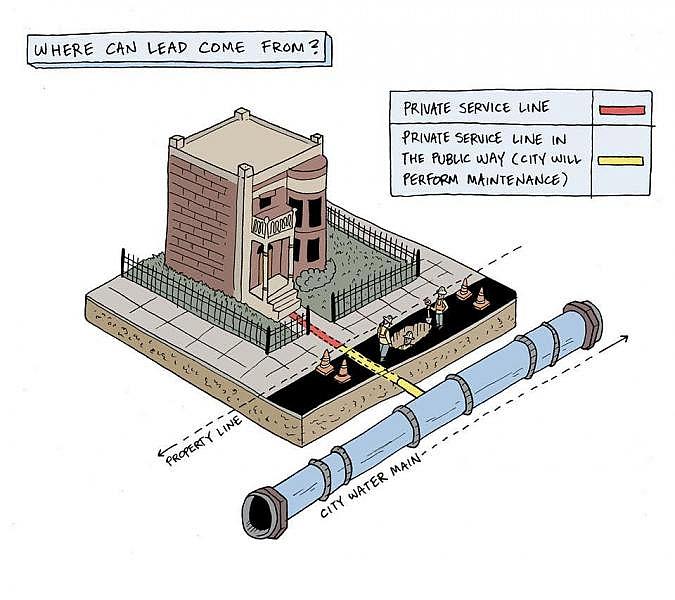‘Living With Lead’ series finds new ways to reach community beyond print

The goal was to report on lead poisoning in Chicago but, beyond the page, the larger goal was to find new ways to reach people where they live, hold power accountable and support civic action around our journalism.
For the project “Living With Lead: How Generations of Chicagoans Carry the Weight of a Toxin Hiding in Plain Sight,” we decided to explore all the diffuse ways Chicagoans have encountered lead, past and present, through the kind of on-the-ground, civically engaged journalism City Bureau was perfectly poised to achieve.
The result was a 20-page print publication featuring six articles detailing a history of lead poisoning in Chicago and, later, three community-based events on Chicago’s North, South and West sides. We organized the stories — a mix of feature, investigative and solutions-oriented journalism — around four themes: “Where It Starts,” “Where We Live and Play,” “Where We Learn,” and “Where We Go From Here.” In addition to the reports, our team oversaw the creation of illustrations, maps, graphs, a photo essay from nearby East Chicago, and curated information on how Chicago residents can prevent lead exposure. Each piece was created over City Bureau’s 10-week fall 2016 reporting cycle — one of three such cycles our group puts on each year, providing a diverse group of emerging and experienced journalists with editorial guidance, financial support and community engagement opportunities.
Though intended primarily for print, “Living With Lead” was backed up with an online hub and a unique text message service aimed at providing readers with the data used in our reports.
Since our launch in October 2015, City Bureau has operated a newsroom on the South Side of Chicago to enhance civic engagement on the South and West sides of the city —two areas that are often synonymous with black and brown Chicago — areas where the majority of the city’s African American and Latinx populations live and work.
I won’t get into the myriad reasons why Chicago’s segregation is easily summed up by region — if you live in an American city, you likely have a history of housing, education, employment and recreational segregation at your own doorstep. But that history comes with certain questions that we believe are critical to successful journalism in the public interest.
Chief among those is a question of access. In the case of a web-based publication, it’s a question that begins early in the process: How do we as journalists meet people where they are? It’s no secret that web penetration is lower in communities facing increasing levels of local disinvestment. At the same time, it is precisely those communities that are best served by our investigations and community gathering efforts.

Our solution was not simply to print 10,000 copies of “Living With Lead” for distribution across the South and West sides. We wanted to go deeper. The creation of our “Living With Lead” text message service was an attempt to reach homes without a direct line to the web. Coverage of the app from local outlets like DNAinfo Chicago, WGN Radio and Chicago Newsroom helped us reach online, audio and television audiences. Working with Groundsource, we developed a service that can be used via text message. After collecting detailed, year-by-year information on lead test results for Chicago Public Schools, the Chicago Park District and the Chicago Department of Health, we set up a phone number that responds to text messages with lead test results geographically particular to a user’s ZIP code.
This came with its own set of challenges, including working with researchers at the University of Chicago to procure up-to-date lead data, working with a Chicago based civic tech company DataMade to analyze and collate that data by zip code and, finally, working with our own team of reporters to turn that data into text message prompts that guide a user to information previously available only through searching a number of different websites and databases. The resulting service is simple — almost analog — in it’s approach. Any Chicagoan can use their cell phone to text “LEAD” to 312-697-1791 and automatically access lead test data for their specific community.
We also worked with the Chicago Public Library system and over a dozen community organizations to give our report life beyond the print edition and tech applications. The final result of our Living With Lead effort was a series of three community info sessions in March where we brought Chicago residents, local experts and journalists together. Check out our latest Storify for a fuller look at these events.
Here are a few of the key lessons that emerged from this project:
● Create space for the invisible audience: Putting our energies and efforts into print and a text message service wasn’t just the right move, it was key to ensuring our readers who don’t have regular access to the internet were able to access our work. One trade-off from an engagement perspective is that this population is difficult to track digitally — one big benefit is that we know they’re there and they know we keep them front and center.
● In journalism, service is the first step toward trust: City Bureau believes in journalism as a public good. In addition to our free, in-person events, we begin our work by asking: “What are we uniquely positioned to do?” and “How can people access our reporting throughout the reporting process?” This opens our work to scrutiny but it also holds us accountable to the public. We invite people in — and that builds trust between our journalists and our readers.
● Collaborate with people doing the work: Our series on lead poisoning wouldn’t be possible without groups like the South Side Weekly and individuals like the University of Chicago’s Eric Potash. These partnerships allowed City Bureau to expand its reach while creating value with collaborators. We expect these relationships to grow in new and exciting ways in the future.
● Don’t begin with the problem: While we waited until the “Living With Lead” text service was fully functional to release it, building a receptive community began months earlier with text-messaged questions on a variety of issues — none having to do with lead poisoning. We posted flyers across the South Side asking our readers about their lives, their loves, their hopes and their fears (thanks to advice from Jesse Hardman of the Listening Post). They responded — and those interactions transitioned into a concrete deliverable for our readers.
● Solutions over noise: In addition to our service-oriented work, City Bureau values the work our reporters put toward creating journalism that provides answers in addition to highlighting problems. Sadly, lead exposure is far from an unknown quantity in the U.S. We’ve found that what those most impacted often lack the information required to apply pressure to politics on behalf of their communities.
[Images courtesy of City Bureau/Darryl Holliday]

